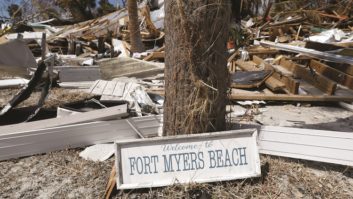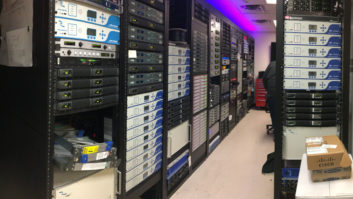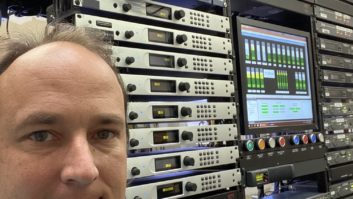Dan Jackson is head of audio operations for SCA [Southern Cross Austereo], Australia’s biggest entertainment company. Its multimedia assets include more than 100 radio stations.
This article appeared in Radio World’s “Trends in Codecs and STLs for 2020” ebook.
Radio World: What’s the latest in trends in the design and performance of codecs?
Dan Jackson: At SCA we are a big believer in standards to ensure interoperability between products. We like to talk in terms of SMPTE 2110 and AES67 for audio distribution, and AES67/SNMP for control. As for codecs we tend to change our choice based on the application; we still use aptX for voice and AAC, Opus and Tieline MusicPlus for audio distribution.
One of the most important trends is delivery of service. As we move away from dedicated POTS and ISDN lines and onto 4G/5G services, we are at the mercy of the tower operators. Having the ability to double-deliver the data through the same or two carriers ensures that content is delivered 100% of the time.
We’ve also noticed a shift away from having extremely low latency links, so things like Forward Error Correction are welcome to help ensure the quality of service.
Another important trend I see is the shift away from traditional “boxes” and capital expenditure. We are seeing a large demand for a software and op-ex model, much like the rest of the IT world.
One of the biggest issues we faced during COVID was the inability to scale our codec fleet. Technologies like ipDTL are certainly paving the way for a software/op-ex future.
When we talk about remote codecs for remote broadcasts, the more portable and durable, the better. Gone are the days of running OB trucks and lengthy ISDN installs. Content teams want to be able to go as soon as possible.
RW: How are today’s technologies solving problems in creative ways?
Jackson: Moving to IP-based technologies has decreased reliability on links, so SmartStream and dual link codecs have allowed codecs to be used in place of expensive microwave links, where historically the IP service is no good.
RW: What role are codecs playing for you in at-home broadcasting?
Jackson: During COVID we had around 20 shows at 50 locations using mostly Tieline VIAs. Their Cloud Codec Controller was an excellent add-on as it allowed our engineers to manage the codecs remotely.
Historically we have been fairly flexible without talent, so broadcasting from home was not new for us. Holiday homes, pregnancies and simply being in another state have required us to have the capability to broadcast remotely. Moving to more portable devices like IOS and Android, but still providing the same level of quality, is an important factor.
[Check Out More of Radio World’s Ebooks Here]
RW: What recent features are offered that other engineers may appreciate?
Jackson: Time-zone delay is a great feature. The ability to pass data streams as well as audio is great.
RW: What will the codec of the future look like, if we use one at all? How powerful can codecs get?
Jackson: As for the future: Fully flexible drop-and-drag DSP boxes, with inputs and outputs on AES67.
If you think about virtual environments and how much resource these environments have, there doesn’t seem to be a limit to power!
RW: What best practice tips should codec buyers be aware of in 2020?
Jackson: Plan for the future. If you don’t have AoIP just yet, it probably won’t be long.
Think about the environment. Is it being installed into a data room or carted to every football game? Do you require dual bonded SIMs?







